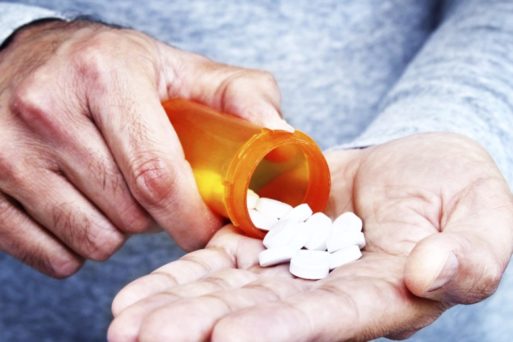Several months ago, President Donald Trump spoke of his support for a national “Right to Try” law in his State of the Union address. Such legislation would, in theory, give terminally ill individuals the right to try new drugs that might help their condition before they are approved by the FDA. Proponents of the law argue that patients who are going to die anyway should have access to any treatment available, whether or not it has been proven to be effective or safe. And to a great extent, the public seems to agree. As of this writing, 38 states have enacted their own versions of right to try laws.

Credit: slate.com
But the language of “right to try” is deceiving, say Martin Wendelbo and Timothy Callaghan in an op-ed published in The Conversation in February 2018. In fact, they argue, such statutes don’t actually grant sick people any “rights” that they don’t already have. What’s more, they can slow down the process of getting new drugs to patients who need them by skewing the results of ongoing clinical trials.
How FDA Approval Works
The process of bringing a new drug to market in the United States (and most countries around the world) is necessarily cumbersome. It involves several phases, the last of which are clinical trials — research studies that test the drug’s effect on humans (versus animals in the laboratory).
Clinical trials are further broken down into three phases. Phase I trials are very small studies that test only the safety of a drug. There are typically about 30 or fewer subjects who are generally paid, healthy volunteers. These studies ask just two questions: Is the drug safe for humans and at what dose?
Phase II clinical trials are studies that evaluate a drug’s efficacy. These are somewhat larger studies, usually involving 100 to 200 subjects who have the condition the drug is designed to treat. Researchers gather data on how well the drug works as well as what sort of short-term side effects occur.
If a drug moves past phase II trials (which the vast majority of new drugs don’t) researchers will then test the drug on more people, looking at efficacy in various patient groups as well as late-occurring side effects. Phase III trials usually involve thousands of patients and take several years to complete.
In all, the process for developing a new drug and bringing it to market takes about 12 years. For that reason alone, the allure of right to try laws is huge. After all, a terminally ill person rarely has 12 years to wait for a new drug that might cure their disease to reach the pharmacy shelves.
Right to Try Gives False Hope
Sadly, Wendelbo and Callaghan point out, the truth is that right to try laws grant patients no new rights at all. True, they give the patient and his physician the right to request a new drug from the manufacturer as long as the drug has passed Phase I clinical trials (essentially bypassing the FDA). But they do not give them the right to actually obtain the drug. Pharmaceutical companies are under no obligation to supply experimental drugs to anyone. What’s more, they have some very compelling reasons to refuse.

Credit: marketwatch.com
The first of these is reimbursement. No insurance company will pay for an experimental treatment that has not been approved by the FDA. And since pharmaceutical companies are in business to make money, they are enormously disincentivized to supply a drug unless they are guaranteed payment in cash. Given that the cost of many experimental therapies can be thousands — if not hundreds of thousands — of dollars, the number of patients who could actually purchase an experimental drug is necessarily very small. (This is also an ethical consideration that should give us all pause.)
Additionally, clinical trials are carefully designed and tightly controlled research studies. Releasing a drug for use outside the parameters of a study could lead to skewed data and inaccurate results. When a company has already invested many millions of dollars on research and development of a new drug, it’s highly unlikely that it will risk delaying final approval for the sake of a few unfortunate souls.
In fact, the NYU Langone Health Department of Population Health states that not one patient in states that have enacted right to try laws has received access to an experimental drug as a result of those laws.
Expanded Access Already Exists
More importantly, according to Wendelbo and Callaghan and hundreds of other experts on health policy and medical ethics, expanded access to pre-approval drugs for patients who might benefit from them already exists. Under the FDA’s Compassionate Use program, patients with life-threatening or rare illnesses can request access to drugs that are still in clinical trials. And, according to the NYU Langone Health Working Group on Compassionate Use and Pre-Approval Access, more than 99 percent of those requests are approved. What’s more, contrary to the claims of many right to try proponents, the agency typically responds to non-urgent requests within six days and emergency requests within 24 hours.
Thus, it would appear that a national right-to-try law would be a solution to a problem that doesn’t exist, while also undermining an agency that exists to ensure that drugs that reach the public are effective and safe.
Note: A proposal to enact federal right to try legislation failed to pass the House of Representatives on March 13, 2018.

 Is “Right to Try” a Political Ploy?
Is “Right to Try” a Political Ploy?


 “Songbird” by Fleetwood Mac
“Songbird” by Fleetwood Mac

 How to Comfort A Dying Loved One
How to Comfort A Dying Loved One














